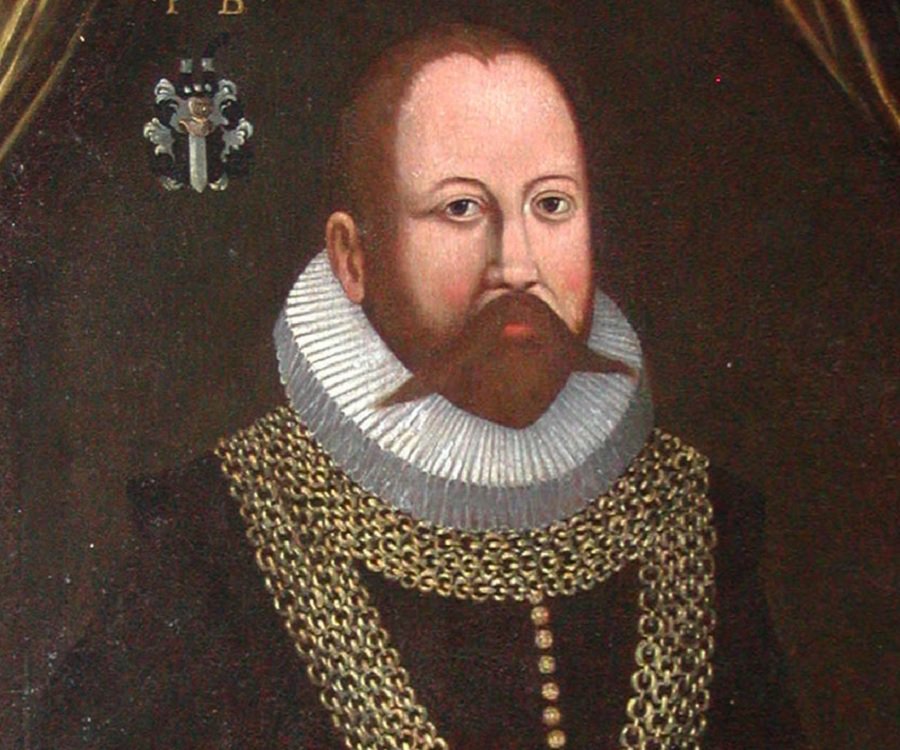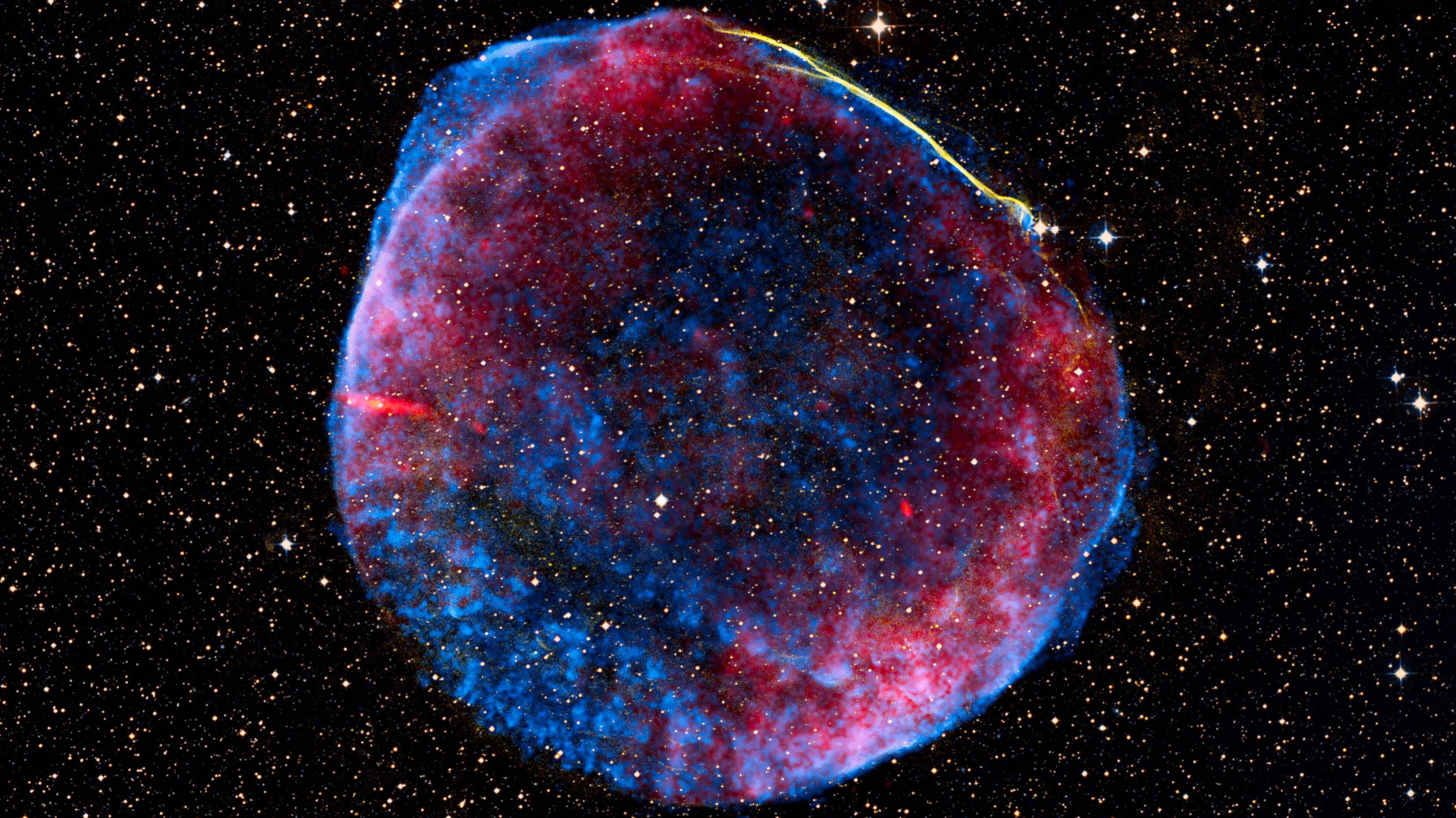
It is surprisingly difficult to find a flattering image of Tycho Brahe.
Honestly. Do me a favor and do a Google image search for the guy. It’ll come up with all sorts of disfigured images, mostly because his nose got messed up in a sword fight…
I know what you’re thinking. A classical astronomer in a sword fight? Suddenly these people seem less like heroes of modern-day science and more like human beings with lives of their own.
Tycho certainly fits the trend. He’s known for being quite the unpopular sort. Bad-tempered and vain, there were few who respected him for more than just his astronomical accomplishments—and even those were few.
So why is he even important, then?
Well…he’s still part of the story of astronomy. And he did actually make some very accurate observations about the night sky. He even invented some new instruments to help him make those observations.
And without Tycho’s impressively accurate observations, Johannes Kepler might never have figured out how planets really move—or at least, he would have had a much harder time.
Perhaps the most important thing to know about Tycho is that he rejected the Copernican model of the known universe, with the sun at the center. He argued that if Earth indeed moved, then we should see parallax among the stars.
What’s parallax? Well, here’s a brief review…

Hold your finger away from your face, in front of some relatively nearby object, like a tree or a building. Then switch which eye is open a couple of times. You’ll notice that your finger appears to move, even though you’re holding it still.
Logically, the same thing should happen in the sky, right?
I mean, if the Earth moves from one end of its orbit to the other (like switching which eye is open), then shouldn’t we see the distance between stars change a bit, just like we see the distance between our finger and the tree appear to change?
That’s what Tycho thought, anyway. And I actually can’t blame him. It’s a good observation, and if it had ever occurred to these ancient astronomers that the stars are so far away we can’t detect parallax, maybe Tycho would have had the right idea.
In fact, in those times, no one could have possibly imagined there was that much space in the universe. The Earth itself was only recently thought to be less than half its true size. And that’s coming from Aristotle, one of the greatest astronomical authorities in classical history.
Anyway, Tycho couldn’t see any parallax between the stars. There is some, but such a small amount you’d need a really good telescope to see it, and the telescope hadn’t even been invented yet.
So Tycho disagreed with the Copernican model. The sun couldn’t possibly be in the center, he reasoned. But some things could be right about the Copernican model…for instance, the planets orbiting the sun actually did make sense to him.
Tycho’s solution was to come up with his own model, the Tychonic system.

Here, you see all the planets orbit the sun.
But the sun and the moon both orbit around the Earth, and the sphere of stars beyond is centered on the Earth. In this way, Tycho’s model was still a geocentric universe, or Earth-centric. But he kept Copernicus’s idea the the planets didn’t orbit around Earth.
Tycho’s model was popular for a while, but like I said, he wasn’t respected for much besides his observations. Before long, the Copernican heliocentric model had gained ground again, and everyone accepted that the sun was the center of the universe.
Not that that’s actually true. But we generally excuse the classical astronomers for that one, since they had no concept of the difference between the “solar system” and the “universe.” It was all one and the same to them.
How were they supposed to know that the brilliant sun that lights our day was just one of the billions of pinpricks of light we see in the night sky?
Besides coming up with the not-so-popular Tychonic model, Tycho devoted himself to fixing the errors in star charts of the time. (Note that these charts were far different from what we know today.)
Because no one had figured out that planets had elliptical orbits, every record of predictions for their movements was off a bit. Even the Copernican system, which finally placed the planets in orbit around the sun, was off by a mile.
Tycho, of course, found this work difficult—as long as he was trapped in the geocentric paradigm, he wasn’t just behind modern astronomy, he was behind in the astronomy of his time. But over the course of his work, he did make one important observation.
Sometime in 1572, a star that’s now known as Tycho’s supernova appeared in the sky. This wasn’t a new star by any means. It was, in fact, a very, very old star that had reached the end of its billion-year lifespan.

And no, it didn’t look this colorful to Tycho. This is a high-exposure shot and quite possibly a false-color image, made possible by modern-day instruments.
But Tycho did see it. Because it was a massive star and it went supernova, it was suddenly bright enough to see with the naked eye. And Tycho noticed that it marked a change in the heavens.
Why was this important?
Because at the time, the heavens—everything outside of the moon’s orbital sphere—were considered perfect and unchanging. Although Copernicus’s model had dismantled this idea somewhat, removing Earth from its central place in the universe, it hadn’t quite been thrown away.
So, logically, according to Aristotle’s teachings, the new star had to be inside the moon’s sphere, right?
But that meant it should also show parallax, because everything beneath the moon’s sphere moved, and was basically in chaos. That’s the whole idea of the geocentric universe—that Earth is the center of imperfection and change.
Tycho tried to detect parallax. But like he noticed with all the other stars in the sky, there was none. Logically, that placed the supernova in the starry sphere…
Or did it?
The supernova had to be in the starry sphere because it wasn’t moving, and only the stars stayed still. But the starry sphere was perfect and unchanging. It turned around the Earth every twenty-four hours, but that was it. How could a new star appear there?
Well, if the heavens were indeed perfect and unchanging, then it couldn’t. Which meant, Tycho reasoned, that the heavens weren’t that perfect and unchanging after all.
This is the major accomplishment Tycho is known for. He held fast to old astronomical models that were outdated even in his time, but he helped astronomy graduate beyond the idea of perfect heavens.
This was the first nail in the coffin of uniform circular motion, the idea that everything in the heavens orbited in perfect circles at constant speeds.
And with that idea called into question, Johannes Kepler would finally have the chance to make his revolutionary discovery.
I want to say this article is so easy to understand. My English is not at that particular level to understand the deep word. I like how your explanation is clear and deliver the good message
LikeLiked by 1 person
Thank you!
LikeLike